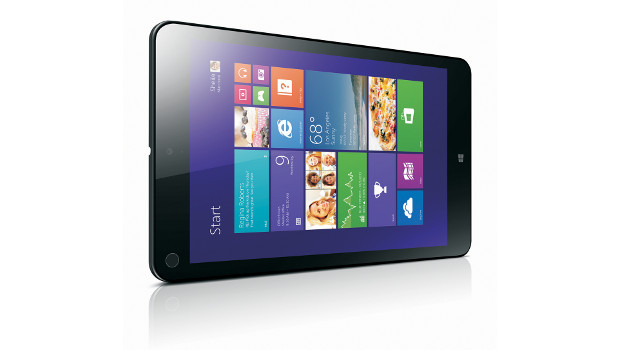Lenovo has stopped selling Windows tablets with screen sizes under 10 inches in the US due to lack of interest.
Lenovo has stopped selling two small-screen Windows tablets with 203mm screens: the ThinkPad 8, which was announced in January and a model of Miix 2, which started shipping in October last year.
“In North America, we’re seeing stronger interest in the larger screen sizes for Windows tablets and are pleased with initial customer demand for the ThinkPad 10,” said Raymond Gorman, a Lenovo spokesman, in an email.
The ThinkPad 8 is the most feature-packed small-screen Windows tablet available, with a 1080p screen and USB 3.0 port. But it was also riddled with charging, screen, connectivity and battery issues.
The remaining ThinkPad 8 stock has been redirected to developing countries, where there is more interest in small-screen Windows tablets, Gorman said.
“In other markets, particularly Brazil, China, and Japan, the demand for ThinkPad 8 has been much stronger, so we are adjusting our ThinkPad 8 inventories to meet increasing demand in those markets. If market demand for ThinkPad 8 changes, we will re-evaluate our strategy,” Gorman said.
The 203 mm version of Miix 2 is not available and there is no other information about whether it will be again, according to a representative who answered the company’s sales telephone line. However, Lenovo continues to sell Miix 2 with a 256 mm (10.1”) screen in the US.
It’s impossible for Windows devices to compete. It’s easier to use Windows 8 with screen sizes of 10 inches or more
Lenovo’s 178- (7”) and 203 mmm tablets are available only with Android. The tablets are priced between $129 (€95.3) and $249 (€184).
Tablets are selling well, driven more by low-cost Android versions than Windows, which could explain Lenovo’s move, said Bob O’Donnell, principal analyst at Technalysis Research.
“It’s impossible for Windows devices to compete,” O’Donnell said.
It’s easier to use Windows 8 with screen sizes of 10 inches (256 mm) or more, O’Donnell said.
“Smaller Windows tablets don’t make any sense anymore,” he said.
However, there could be some exceptions. Small notebooks have done well in Japan and it would not be a surprise if small-screen Windows tablets did well in that market, O’Donnell said.
Microsoft’s Windows 8.1, when it was released in 2012, was initially targeted at PCs and tablets with 256mm screens or larger. But the OS was extended to smaller screens with growing adoption of 178mm Android tablets. However, there have been questions about whether Windows 8, which combines a tablet and desktop OS, would work well on 8-inch screens.
Dell, Toshiba and Acer are among a handful of companies selling small-screen Windows tablets. Microsoft in May reportedly planned to announce a small-screen Windows 8.1 RT tablet along with the Surface Pro 3, but scrapped plans at the last minute.
Microsoft wants device makers to build low-cost Windows devices and has said it would license the OS to hardware partners at no cost. The company in May announced Windows 8.1 with Bing, which would be sold license-free to hardware makers.
With the back-to-school period in full swing, many companies are also adjusting product shipments to meet growing demand for PCs and tablets. Dell recently stopped online shipments of Chromebooks to meet existing orders for the laptops.
Agam Shah, IDG News Service








Subscribers 0
Fans 0
Followers 0
Followers